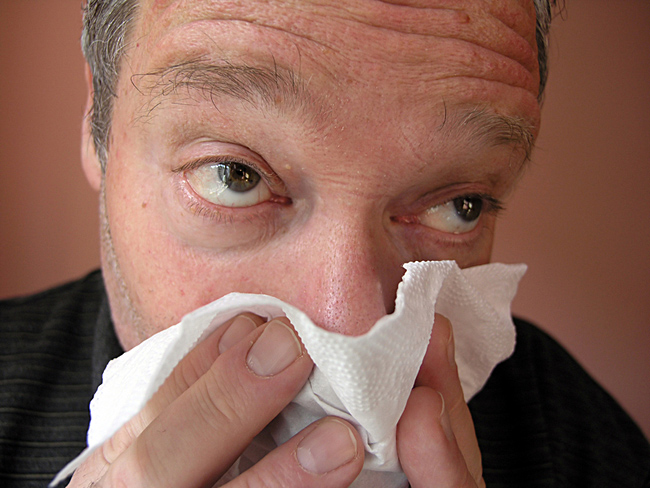Study Reveals Why Flu Thrives in Winter

For the first time, scientists have solid evidence of why the flu is so common in winter.
A new animal study suggests that the influenza virus' success hinges on low relative humidity and cold temperatures. Such conditions keep the virus more stable and in the air longer than warm, humid conditions, scientists said. And apparently, the frosty weather's role is more important than that of the human body in helping the virus thrive.
"We've always thought the immune system wasn't as active during the winter, but that doesn't really seem to be the case," said study coauthor Peter Palese, a virologist at the Mount Sinai School of Medicine in New York City.
When we cough or sneeze, tiny droplets of water enter the air and hang around until they drop to the ground — or an unsuspecting passerby breathes them in. Once inside our airways, any flu viruses that have hitched a ride on the droplets can launch an attack.
"We found that the flu's transmission period is much, much longer when temperatures and humidity levels are low," Palese told LiveScience.
He thinks that the conditions not only suck away the droplet's water weight, allowing them to float in the air longer, but also dry out virus-blocking mucous and cells in our airways. Bigger viral doses combined with the body's disabled means to flush them out, Palese said, gives the flu a better fighting chance to infect a person, regardless of their immune system's strength.
This correlation has been obvious, Palese acknowledged, but solid explanations for wintertime viral success have eluded scientists because modeling human-like disease transmission in animals is difficult. Many animals, such as mice, fail to transmit the viruses that make humans sick.
Get the world’s most fascinating discoveries delivered straight to your inbox.
"The only animals that can model virus transmission are ferrets, but they're very expensive, big and hard to work with," he said. "They also like to bite a lot." By reading an 88-year-old medical study, however, Palese's team discovered that guinea pigs simulate human coughing and sneezing extremely well.
"I never believed what my grandmother told me about getting sick when it's cold, but it turns out she was right," Palese said. "Guinea pigs aren't humans, but this is some of the best evidence yet to explain the seasonality of the flu."
Although the flu spreads primarily through the air, the viruses can survive on doorknobs, handrails and other surfaces. Medical experts report that frequent hand washing, especially before meals, can lower the risk of picking up as well as transmitting diseases such as the flu.
Palese and his colleagues' complete findings are detailed in the October issue of the online journal PLoS Pathogens.
- VIDEO: Bird Flu Pandemic! Will it Happen?
- 10 Things You Didn't Know About You
- Top 10 Mysterious Diseases


